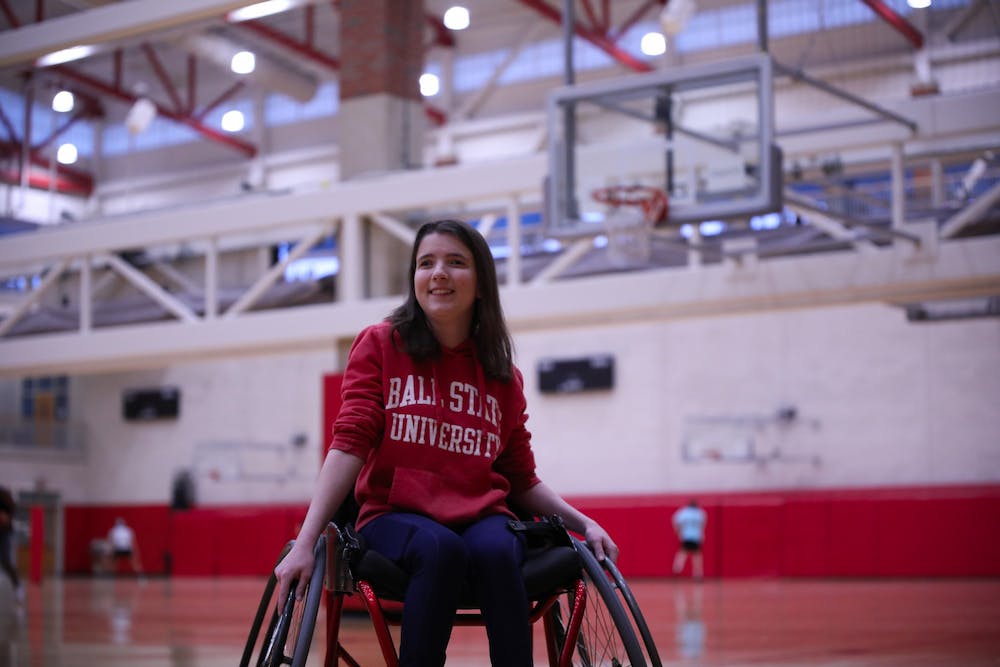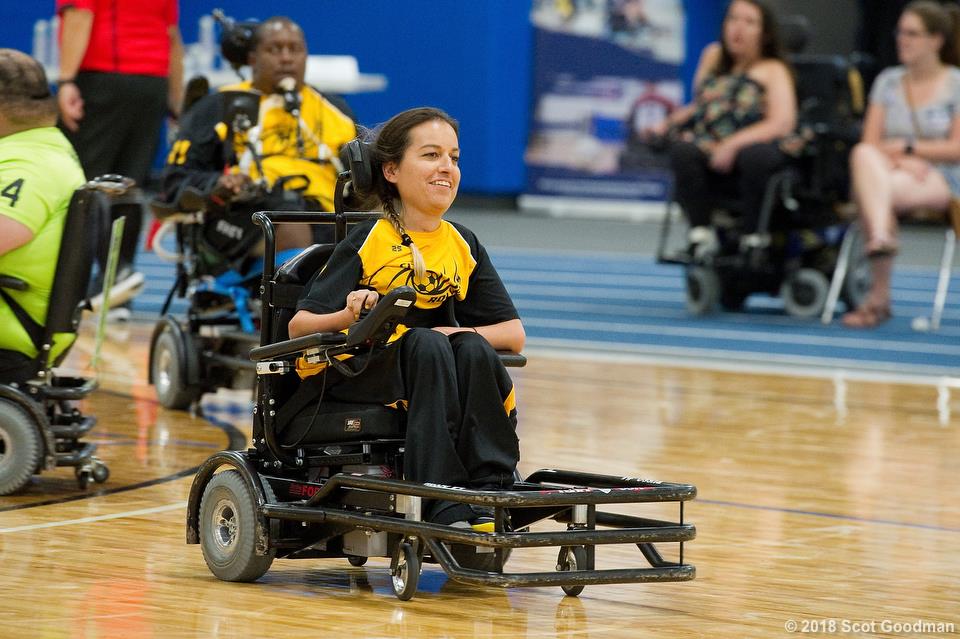
Adaptive Sports: Wheelchair Rugby
The sight of wheelchair users colliding may be alarming to some, but for wheelchair rugby player, Ryan Lindstrom, it's exactly what drew him to the game. Injured in a car accident in 2002, Ryan was in rehab when his recreational therapist took him to a wheelchair rugby tournament in Tampa, Florida. Lindstrom was only a year out from his injury, but he sat in the crowd in his wheelchair and neck brace, determined to play the contact sport. Since his injury, Ryan has found freedom in adaptive sports, which is something he hopes others with disabilities will have a chance to experience too.
What Is Wheelchair Rugby?
Invented by a group of Canadian quadriplegics in 1977, wheelchair rugby was originally called “murderball” due to the sport’s intense nature. With the founding of the World Wheelchair Rugby Organization in 1933, wheelchair rugby became an internationally recognized sport for athletes with disabilities. After making its first appearance in the 1996 Paralympics, U.S. athletes took home the sport’s first gold medal in the 2000 Paralympic games.
During a game, two teams of four compete in full-contact play, using the force of their wheelchairs to conquer their opponents. Athletes play a 32-minute game, with four 8-minute quarters. Wheelchair rugby teams can score upwards of 60 points a game, with games going into overtime if teams tie. Professional players must follow a set of rules specific to the game, and players are given a classification to ensure fair play among each team.
What Is the Object of Wheelchair Rugby?
In both traditional and wheelchair rugby, an athlete must carry the ball beyond their opponent’s goal line. Sound familiar? That’s because it’s like wheelchair soccer, but instead of kicking the ball, you’ll see wheelchair rugby athletes dribble and pass the ball to make a goal. In wheelchair rugby, a goal is made when a player has possession of the ball, and at least two wheels of their wheelchair cross the opponent’s goal line. When a team has the ball, they have 40 seconds to score a goal. Each goal is worth one point, and the team with the most points at the end of the game wins.
How Is Wheelchair Rugby Different From Traditional Rugby?
A few key differences set wheelchair rugby apart from traditional rugby including:
- Where the game is played: Like power soccer, wheelchair rugby is played on a basketball court. This gives athletes a smaller playing area and a level surface to play on, allowing the game to be played with fewer interruptions.
- Kicking the ball: In traditional rugby, the only way to move a ball forward is to either kick or carry the ball. In wheelchair rugby, players cannot kick the ball, so they move the ball forward towards the goal by carrying the ball in their lap.
- Type of ball: In traditional rugby, athletes play the game using a rugby ball; however, wheelchair rugby athletes use a rounder ball, like a volleyball to play the game. For athletes with varying disabilities, this kind of ball is easier to hold than a traditional rugby ball.
Who Can Play Wheelchair Rugby?
Wheelchair rugby is played by athletes who have disabilities which affect all four limbs. Like wheelchair basketball and other paralympic sports, athletes who play professionally are given a classification. This classification assigns a point value to each player. Point values are based on an athlete’s ability. Athletes who receive lower point values have less function, whereas athletes who receive higher point values have more function. On a professional team, each player’s assigned point value is added. The total number of points for each team cannot exceed 8. In other words, each player's ability is taken into consideration so that each team has a fair chance of winning the game. Athletes interested in playing professionally can find a local team or start a team. To find a team near you, visit the U.S. Wheelchair Rugby Association website.
Wheelchair rugby can be played recreationally by those without disabilities. Lindstrom suggests those interested work to build their stamina firsthand and then check local Facebook pages to find teams in their area. He said he enjoys the challenge of playing alongside non-disabled athletes but acknowledges that it can take many months for non-disabled players to adjust to the physical demands of the adaptive sport.
Can You Tackle in Wheelchair Rugby?
In traditional rugby, players tackle each other to either gain possession of the ball or prevent their opponent from scoring a goal. The same idea can be seen in wheelchair rugby. Although you may not see players tackle each other, you will certainly see them run into the wheelchairs of their opponents. In wheelchair rugby, this behavior is encouraged, and it’s one of the reasons Lindstrom loves the sport. He said, “You know you’ve played in a rugby tournament when your body hurts the next day.”
Just like traditional rugby, wheelchair rugby has rules regarding contact. For example, in wheelchair rugby, athletes cannot hit another player anywhere behind the axle of the rear wheel of their wheelchair. This can cause a wheelchair to spin uncontrollably, making the person in the chair lose control if their chair were to tip over. Physical contact with another player’s body is also not allowed. Players who commit either of these fouls will spend time in a penalty box. This concept may be familiar to ice hockey fans. Just like a penalty box in ice hockey, a wheelchair rugby player may be removed from a game to sit in a penalty box for a period depending on the foul committed.
What Equipment Do You Need for Wheelchair Rugby?
Wheelchair rugby players use specialized wheelchairs for the sport. These wheelchairs can be custom-made for each athlete. Like basketball wheelchairs, rugby wheelchairs have a low center of gravity with tilted wheels to provide stability for impact. Rugby wheelchairs are also built with seat belts and spoke guards to protect both the player and their wheelchair. Players often use gloves to protect their hands and fingers from impact or injury.
When he’s not driving to practice in his wheelchair accessible SUV, you’ll find Ryan playing other sports like wheelchair basketball and wheelchair football. Lindstrom said wheelchair sports changed his life. For him, it’s not just about the sport. He said, “Wheelchair sports [are] about the social aspect [and] learning how to live life in a chair.” He said he’s learned a lot from his peers, who are also wheelchair users. He hopes others can experience the life-changing impacts adaptive sports can have and encourages anyone who’s interested to try wheelchair rugby or any other adaptive sport they might be interested in.
Looking for more information on adaptive sports? Check out the other articles in our wheelchair sports series to find an adaptive sport that’s right for you.




